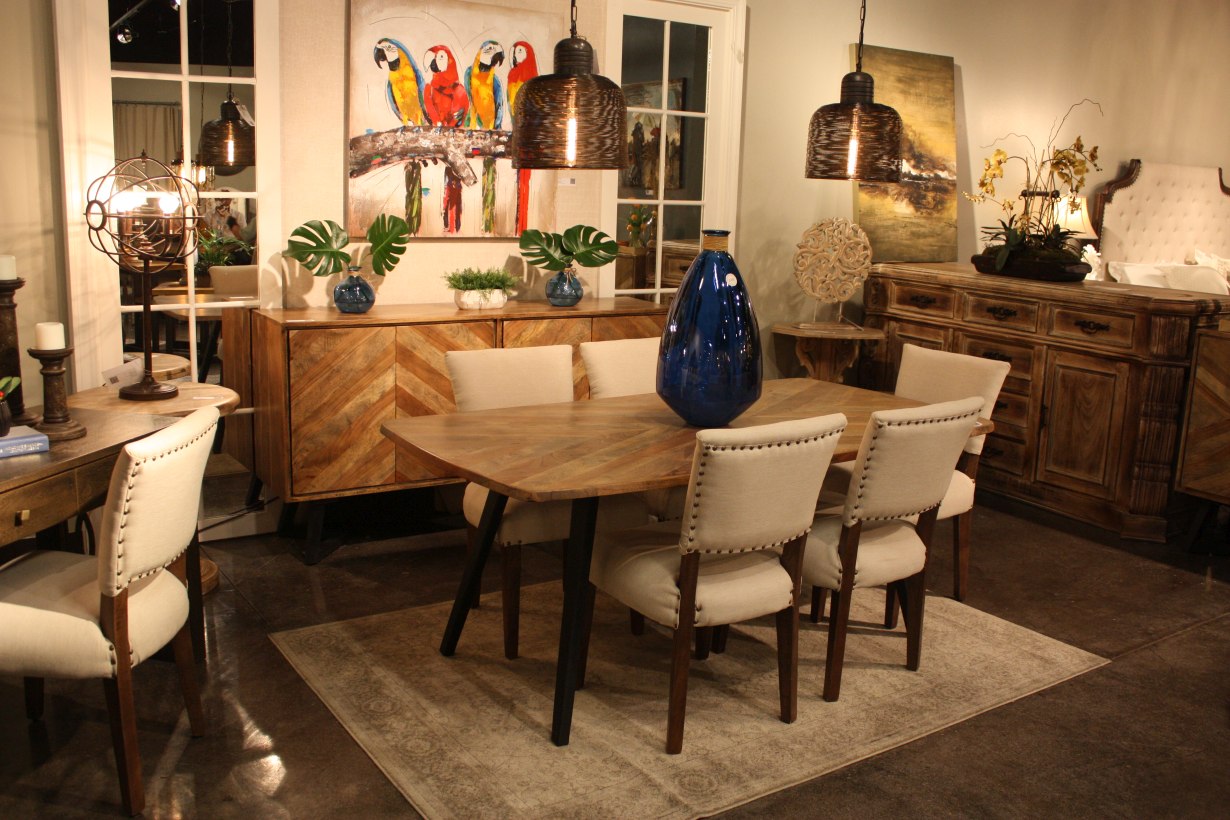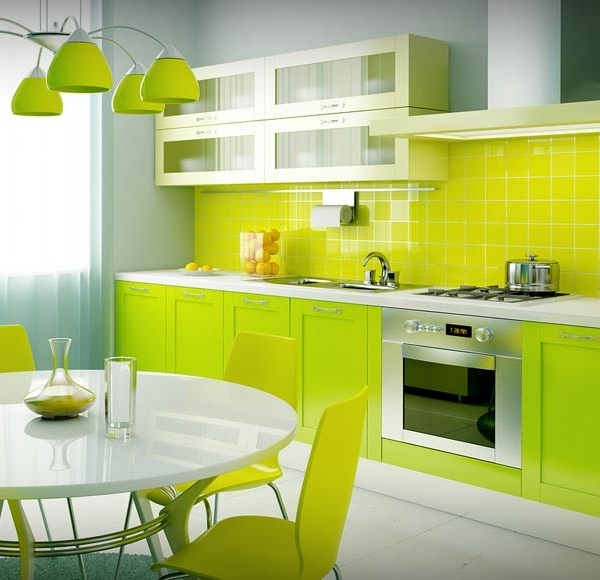Creating the ideal ambiance is a crucial part of decorating a dining room. The dining room is a place where you want to make people feel comfortable and welcome. Colors can work against this goal and give your room a harsh or unwelcoming vibe. While some colors may be too stimulating, others may be chilly and stark, which detracts from the atmosphere of the space. Avoiding these tones will ensure that your dining room remains a place for your family and guests to enjoy hearty meals and stimulating conversation year after year.
In many cases, you can avoid certain colors that are not appropriate for the dining room by simply selecting a complementary tone that might have more depth or subtlety. As with all design advice, these paint color suggestions are subjective, so as always, choose a color that suits your space, needs, and preferences.
Bright Reds

Colors elicit a wide range of emotions, and bright red has been linked to strong feelings such as anxiety and restlessness. The boldness of red can also come across as harsh and aggressive. Because of this effect, bright red can feel overwhelming in the dining room. This intensity can make it difficult for guests to unwind and enjoy themselves.
Red tones can work well in a dining room, but many of the more successful reds are muted versions. Deep burgundy or terracotta are similar options but aren’t as harsh as bright red. These retain red’s warmth and energy but are muted with ample additions of black or brown.
Stark Whites

Stark white is popular in modern, minimalist designs, but it may be unsuitable for a dining room because it can feel cold and impersonal. Crisp, untoned whites will appear harsh in bright light, making them uncomfortable for long gatherings. Alternatives similar to white include off-white, cream, and pale beige. These colors add some warmth to your dining room design while still keeping the space bright and relaxed.
If white is the best color for your overall aesthetic, try to balance it out with warm and vibrant wall art and furniture. Also, consider using warm lighting rather than cold lighting to make the space feel more welcoming as the daylight fades.
Cool Grays

In a space designed for socializing and joy, cool gray will not create the desired atmosphere. Instead, cool gray will dampen the atmosphere, making it feel cold and sterile at worst and dull and uninteresting at best. Cool greys have purple, blue, and green undertones; these become more visible when you hold up the color against a stark white sheet of paper.
Because of the recent popularity of gray color tones, there is an incredible variety of grays available with warmth, depth, and nuance. Look for grays that are either balanced or lean towards beige. These grays will work beautifully in a dining room with wood tones and other natural materials.
Dark Purples

Sombre and heavy are not feelings that you want associated with your dining room, so steer clear of dark purple tones. This color will absorb the light in the room, creating an enclosed atmosphere that is more suitable for a private study than for a dining room. The richness of dark purple is luxurious, but it can also be overwhelming and overpower a room, making it feel smaller.
Instead, consider lighter shades of purple, like plum or lilac. These retain the richness of purple but offer a more open and airy feel than dark purple. Light purples remain sophisticated yet are soft and tranquil.
Neon Shades

Typically too intense for the dining room, neon shades create a style that is more in keeping with a teenager’s room or a trendy neighborhood cafe. These bright, eye-catching colors are overstimulating and, like others on the list, make it difficult to relax and enjoy a meal.
If you long for something slightly off-beat and lively, you can still decorate your dining room with bright colors. Consider options like coral or sky blue. These will still add fun and personality to your dining room design without making it feel too much.
Vivid Yellows

Painting your dining room a vivid yellow will most likely overwhelm you with its intensity. Because of its tendency to reflect light, this vibrant shade may produce an uncomfortable glaring effect for those who are using the dining room. Vivid yellow walls will make it difficult for your guests to relax, making their dining experience less enjoyable.
Shades of yellow can work very well in dining rooms, and the best are softer, more muted shades of yellow. These colors retain the vibrant, uplifting effects of yellow without overpowering the space. Another way to lessen the impact of the vivid yellow color is to paint the trim rather than the walls or incorporate bright yellow hues into the décor.
Blacks

Black is gaining popularity in interior design, and we are on board—just not for your dining room walls. Black is generally too intense and heavy for dining rooms, creating an oppressive and enclosed atmosphere. It also does not provide the warm, cozy atmosphere that is desirable in a dining room.
If you like black, you are likely attracted to dark colors. Instead of black, consider using charcoal or navy. These shades are still extremely sophisticated, but they are more balanced. These colors complement more options for decor and furnishings because they have a wider range of undertones than black.
Intense Oranges

Certain orange hues, like other warm colors like red and yellow, can be overwhelming in a dining room setting. These colors can quickly dominate the space, creating an overstimulating environment. Rather than complementing the furniture and decor, intense orange walls will prevent these elements from attracting attention and make the design feel unbalanced.
Some orange colors work well in dining rooms, but they are softer and more earthy than bright orange. Consider colors like burnt sienna or terracotta. These colors include a healthy dose of a shaded pigment, such as brown or gray, to soften the intense edge of bright orange.
Paint Colors That Always Work in Dining Rooms

When choosing a dining room color, remember that your goal is to create a cozy and engaging space that also complements the rest of your home’s color palette, particularly the colors visible from your dining room. Soft neutrals such as taupe, beige, and warm off-whites provide a versatile backdrop that complements a variety of decor styles while promoting a sense of calm.
Consider a variety of blues ranging from navy to emerald green if you want a moody but elegant color. For these colors to work well, use them in a dining room with plenty of windows to keep the room bright rather than sombre. Incorporate a variety of ambient and mood lighting sources to adequately illuminate the space after the sun goes down. Earthy tones are another color scheme that works well in the dining room. To create a dining room that is unique yet grounded and versatile, opt for colors such as sage green, mushroom pink, and ochre yellow.


